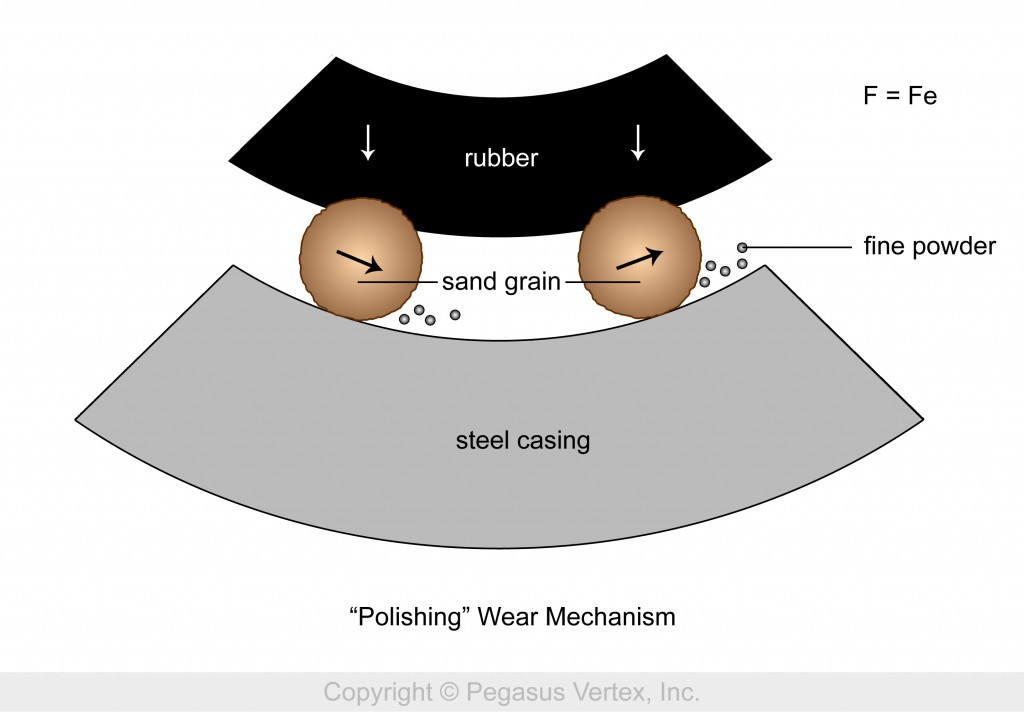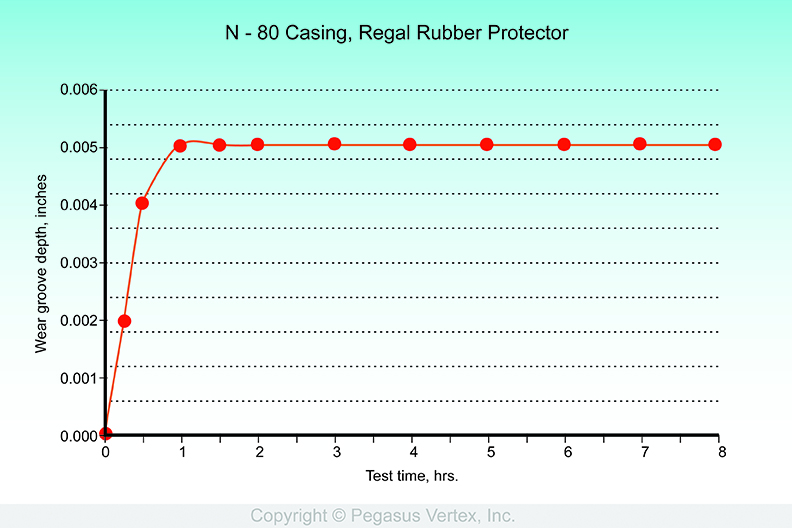Although some of the proprietary hardbanding alloys can significantly reduce casing wear, there is only one material which we know of will spectacularly reduce the wear groove depth limit. What is this marvelous material?
Rubber!
Rubber? Yes, rubber. 70 durometer rubber.
This was discovered as a result of a casing wear test using a specially built pipe protector as a tool joint.
What we discovered was that the `wear groove’ was a `mirror finish’ strip where the wear groove should have been. This results from the fact that the rubber `tool joint’ polishes the inner wall of the casing instead of grinding it. The polishing mechanism is pictured in Figure 1.
This is the same mechanism that has been used for centuries to polish optical elements.
The difference between grinding and polishing is that the abrasive particles imbed themselves into the pliable surface of the rubber (or pitch, beeswax, wood, paper, or felt) protector, and `shave’ very small elements of the casing surface. The pliable surface of the rubber tends to orient the abrasive particles rather than to give them an unyielding background against which to push into the casing surface, exceeding its yield, and fracturing the casing surface.
The extremely low casing wear using a rubber `tool joint’ is shown in Figure 2. This figure shows a plot of the casing wear data from an 8-hour test in which the steel tool joint is replaced with a rubber pipe protector. The casing wear groove rapidly reaches a depth limit of 0.005 inch, and produces a mirror finish on the 0.653 inch wide wear groove.
To put this into perspective, Figure 3 shows the results of three casing wear tests. These are all with N – 80 casing in a water-based mud containing 7 volume % Clemtex #5 sand. The upper plot of the figure is data using a steel tool joint. The second plot is data using a tool joint hardbanded with BOLTALLOY, and the bottom trace is data from the test using a rubber protector as a tool joint.
So why aren’t rubber pipe protectors routinely used to protect intermediate casing strings? They have a couple of limitations: (1) thermal and (2) chemical.
In Casing Wear Series - 11, we will talk about a few of the properties of rubber pipe protectors.



